
In the AFR today, Westpac’s Bill Evans notes how consumer demand in Australia has experienced its weakest recovery since the 1970s following the Reserve Bank’s first cut to official interest rates in November 2011:
Westpac chief economist Bill Evans said that domestic demand for goods and services is currently the worst it has been for many decades, despite a historically low cash rate of 2.75 per cent.
“Normally when you cut rates you stimulate demand but in this cycle the response has been the most modest it has been since the 1970s,” he said, adding that he believes the RBA needs to lower rates to 2 per cent in order to boost demand in the face of major domestic and global headwinds.
Certainly, a quick glance at Australian retail sales data shows that growth has underperformed the four previous rate-cutting cycles, with sales up just 4.5% since October 2011 (the month prior to the first rate cut) versus average 9.0% growth at the same stage of the prior rate-cutting cycles (see next chart).
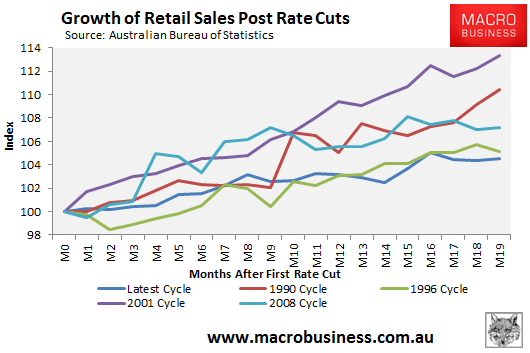
Interestingly, real retail sales growth per capita has essentially flat-lined since December 2007, following two decades of strong growth (see next chart).
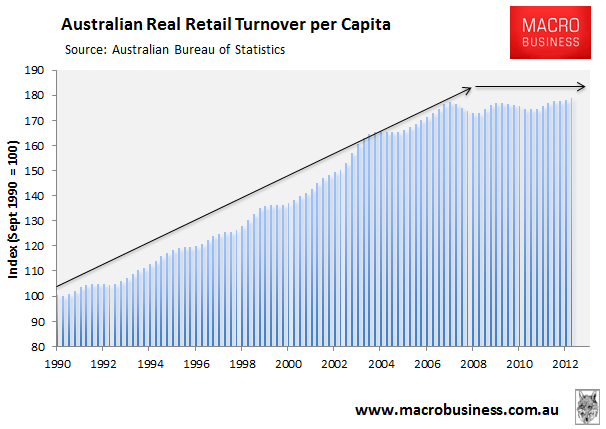
There are strong reasons to believe that retail sales growth will remain soft going forward, irrespective of whether the Reserve Bank cuts interest rates further.
First, one of the key drivers of the strong growth in retail sales over the 1990s and 2000s was the inexorable rise in household debt and the run-down of household savings (see below charts).
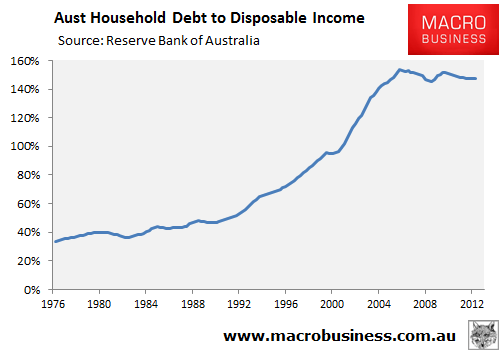
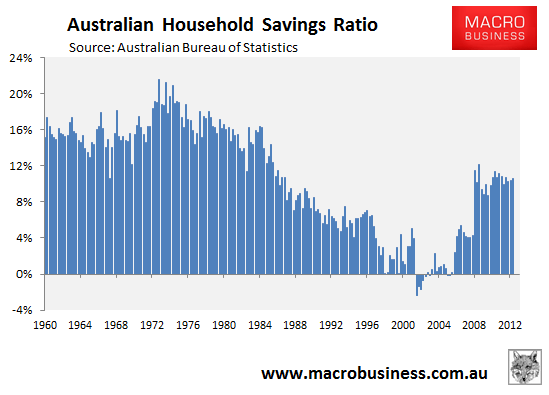
Household debt levels stabilised from 2006, whereas household savings rates have returned to long-run historical norms, suggesting that sales growth can only grow in line with disposable incomes going forward.
On this front, the news is also bad for the retail industry. As explained in detail earlier today, the growth in household disposable incomes over the 2000s was extraordinary, driven by the once-in-a-century surge in commodity prices and the terms-of-trade. As the terms-of-trade retraces back towards its longer-run average, it will detract from income growth, pulling down consumption and retail sales in the process.
The next chart is instructive. Despite five years of sluggish retail growth, overall retail sales have still managed to grow at a faster rate than incomes since 2000 – incomes that were highly inflated by the one-off boom in commodity prices (see next chart).
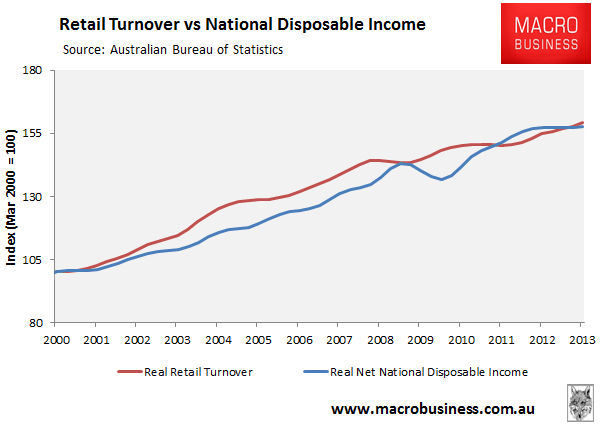
Clearly, the prior decade’s retail sales growth was extraordinary, driven by the huge surge in household debt and the once-in-a-century boom in incomes. The situation was unsustainable and the retail industry should not expect growth to return to anywhere near these levels in the decade ahead.

